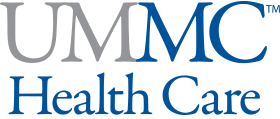Cancer Screening
- Cancer Home
- Patient-Centered Cancer Care
-
Cancer Types
- Brain and Central Nervous System Cancers
- Breast Cancers
- Gastrointestinal Cancer
- Genitourinary Cancers
- Gynecologic Cancer
- Head and Neck Cancers
- Leukemias, Lymphomas, and Myelomas
- Liver and Bile Duct Cancers
- Lung Cancers and Mesothelioma
- Melanoma and Skin Cancers
- Sarcoma (Bone and Soft Tissue Cancers)
- Cancer Screening
- Cancer Treatment Options
- Cancer Support Services
- Infusion Therapy
- Radiation Therapy
Oral Cancer Screening
Regular screenings can find oral cancer sooner, when it’s easier to treat.
Your regular dentist will check your mouth for signs of cancer during your check-ups, but you also can check your own oral cavity. When conducting a self-exam, look for red or white patches in your mouth, lumps, or sores that persist and perhaps bleed, as well as sores that do not heal.
Use your finger to feel for lumps and look at these parts of your mouth:
- The roof of your mouth
- The inside of your cheeks and your back gums
- Your tongue, including underneath and the sides of it
- Check around your mouth and feel your neck and jaw for any lumps that may be enlarged lymph nodes
Screening appointments and locations
University Dentists regularly screen for oral cancers as part of any regular dental treatment or six-month cleaning.
- Clinic hours are 8 a.m.-5 p.m., Monday-Friday.
- To schedule a dentistry appointment, call (601) 984-6155.
Our locations include:
Oral cancer and tobacco cessation
Most oral cancers are linked to smoking or tobacco use. The best way to avoid developing cancer of the mouth is to quit tobacco use. UMMC supports a tobacco cessation program that can help you quit using all forms of tobacco. Learn more about tobacco cessation, or call The ACT Center for Tobacco Treatment, Education, and Research at (601) 815-1180.
Diagnostic tests
UMMC performs several tests to help detect and diagnose oral cancer. A doctor or dentist may use special dyes or lights to see if a white or red area in the mouth is prone to cancer. Some tests, such as those below, may help locate tumors or any signs of oral cancer. Other tests may help determine if the cancer has spread.
Barium swallow
This test is commonly used to see if the cancer has spread, and is often called an upper GI series. Patients swallow a barium liquid, which coats the walls of the esophagus and stomach, making them appear in more detail on X-rays.
Computed tomography (CT or CAT) scan
A computed tomography scan, sometimes called a CAT scan, provides more detail on what is going on inside the body. During the scan, the X-ray beam moves in a circle around the body and sends digital information to a computer that interprets the data and displays it in two-dimensional form on a monitor.
Endoscopy
A thin, flexible lighted tube is inserted through the mouth or nose to examine tissues inside the mouth and throat. A biopsy, or tissue sample, may also be taken.
Magnetic resonance imaging (MRI)
A MRI uses magnets and radio waves to make a detailed image of the body. An MRI may be recommended if cancer is centered in the mouth since an MRI can filter out factors like fillings and other dental work.
Positron emission tomography (PET)
In this procedure, a small amount of radioactive glucose (sugar) is injected into a vein and a scanner makes detailed, digital pictures of the area of the body where the glucose is used. Because cancer cells often use more glucose than normal cells, the pictures can be used to find cancer cells in the body.
PET/CT
This single scan combines the ability of a CT scan to show tissue that looks abnormal and a PET scan to show tissue that acts abnormally. The UMMC Cancer Center and Research Institute radiology department’s PET/CT scanner offers the highest level of detailed image quality currently available. The ability to look at CT and PET images together helps doctors more precisely identify the location of abnormal, possibly malignant (cancerous) tissue in the body.
X-rays
X-rays produce images of the body and may show if a tumor is present.


